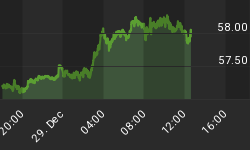Mercedes-Benz has announced "Future Truck 2025", a self-driving truck that it expects to be on the streets by that date. I expect sooner and will give my reasons in just a bit.
First, please consider Mercedes Is Making a Self-Driving Semi to Change the Future of Shipping by Wired.Com.
The latest truck concept from Mercedes-Benz doesn't look like anything crazy. Its design is a bit unusual, and it's loaded up with LEDs instead of headlights and cameras instead of side mirrors. But those modest tweaks to conventional design hide the fact that this is a serious bid to revolutionize the trucking industry. That's because the "Future Truck 2025" drives itself. And while it's a prototype, Mercedes is serious about spending the next decade getting it -- and us -- ready for commercial use.
Autonomous driving is nothing new for trucks in agricultural and military applications, and should be available for passenger cars by 2020. But trucks that share our highways are tempting candidates for shedding their human component: Highway driving is easy for computers but dangerous for us, especially when big machines are involved. In 2012, according to NHTSA, 333,000 large trucks were in crashes in the US. Those accidents killed nearly 4,000 people, the vast majority of whom were riding in passenger vehicles. Regulators have trouble ensuring that drivers get adequate rest, and the trucking industry has fought back against regulation.
With the idea that humans who drive less cause less trouble, Mercedes equipped the Future Truck 2025 with the "Highway Pilot" automated system. "It never gets tired. It's always 100 percent and sharp. It's never angry; it's never distracted," says Dr. Wolfgang Bernhard, the Daimler board member for trucks and buses. "So this is a much safer system."
For an autonomous system, highway driving is far easier than navigating cities. There are no cyclists or pedestrians to watch out for, speeds are steady, and turns are minimal. The "Highway Pilot" system combines several established technologies that will maintain lane position and following distance using cameras and radar. The sensors have been fitted to provide full coverage of the truck's surroundings, and the assistance systems are linked.
The big addition vehicle-to-vehicle communication technology connecting the truck to other cars on the road, providing their exact locations and speeds. The truck doesn't need this data to drive autonomously, but it's helpful for things like moving aside for emergency vehicles or detecting stopped vehicles up ahead.
In the Future Truck, which Mercedes unveiled at a commercial vehicle conference last month, the driver becomes a "transport manager." He gets the truck onto the highway and merges into traffic. At 50 mph, he's prompted to activate the "Highway Pilot" and relax.
Time Flies Faster Than Expected
Mercedes-Benz calls the project "Future Truck 2025". I confidently predict much sooner.
Wired states "Autonomous driving is nothing new for trucks in agricultural and military applications, and should be available for passenger cars by 2020."
The primary benefit to autonomous cars is elimination of the taxi driver. Otherwise, who wants to pay the cost of all the radar, mirrors, etc.?
I am sure such costs will come down over time because price of technology is the one thing the Fed and governments have the least influence over.
But where's the payback?
The primary payback is cost elimination. And where is that? It's in delivery. Delivery of pizzas, transporting people, and transporting trucks.
When it comes to pizza, costs dictate that mini-drone helicopters will win out over autonomous cars. For delivering people to destinations, autonomous taxis are in order.
But the biggest cost efficiency is in trucks.
Truck drivers make $40,000 to $80,000 a year. You can buy a lot of radar, cameras, and other driving technology for that price.
Wired says the driver will get the truck onto the highway , then at 50 mph, activate the "Highway Pilot" and relax. I suggest not quite.
Mish Supply Chain Proposal
- A paid driver will drive a loaded truck to a trucking hub near an expressway.
- The autonomous robo-driver will drive the truck to a trucking hub exit spot on an expressway or major highway near the final destination point.
- A paid driver will navigate city traffic and take the truck to its final destination, unload the truck, then return the truck to the closest expressway trucking hub.
- The autonomous robo-driver will drive the truck to its next pickup location on some other expressway where a paid driver takes over, driving the truck to its loading point.
- Drivers report to the hub in their own vehicle. They only get paid to drive truck between the hub and local destinations.
The advantages of the above scheme are obvious as well as bullet-proof. All the miles truck drivers drive on expressways will soon vanish. Truck hubs will form near every major city and every major roadway.
At most, trucking jobs will consist of driving trucks from hubs to final destinations and from final destinations back to the hubs.
Eventually, but it may take a lot more time, technology will be good enough to eliminate drivers altogether.
Regardless, truck driver jobs, as we know them now, will soon vanish .
For pizza delivery and bank services, please consider What Will Your Bank Look Like 5 Years From Now? How Will Pizzas Be Delivered? Do You Tip a Drone?
















